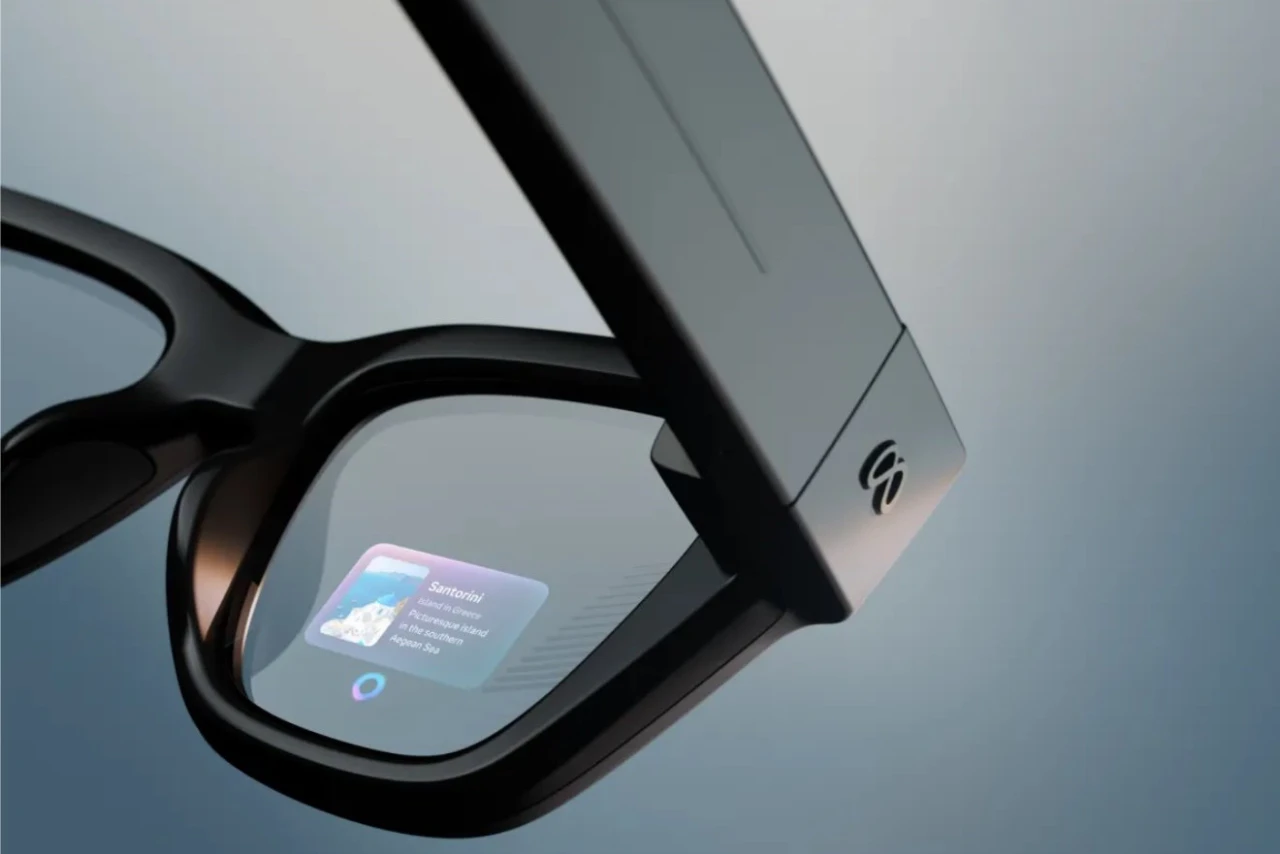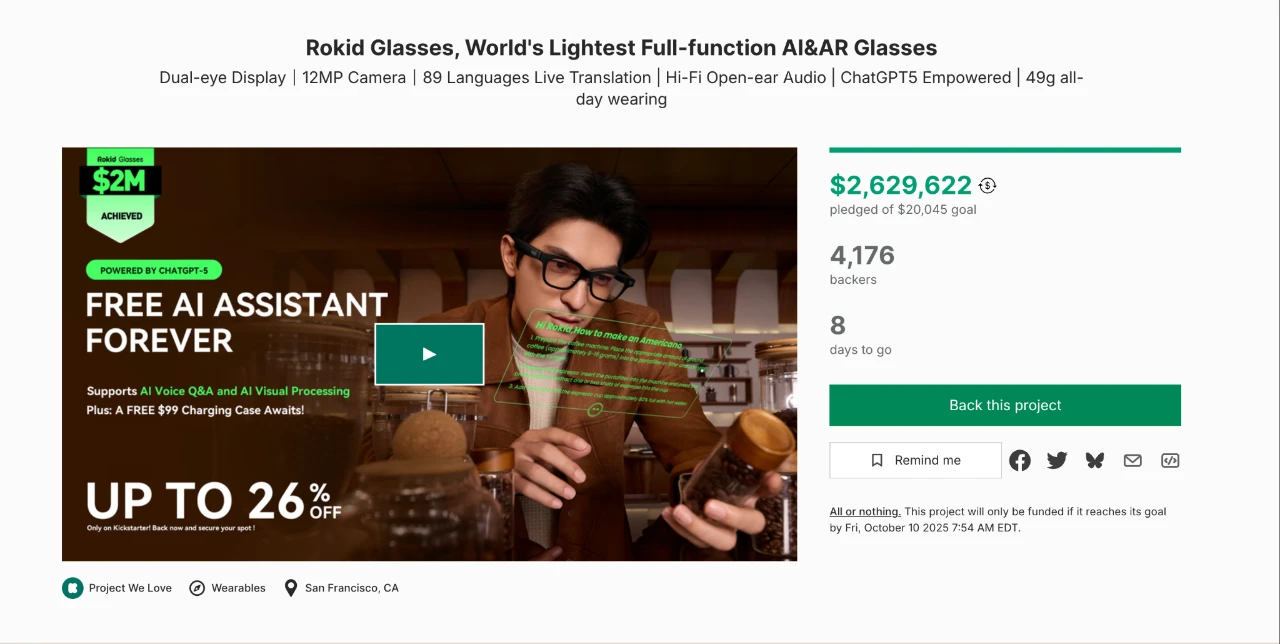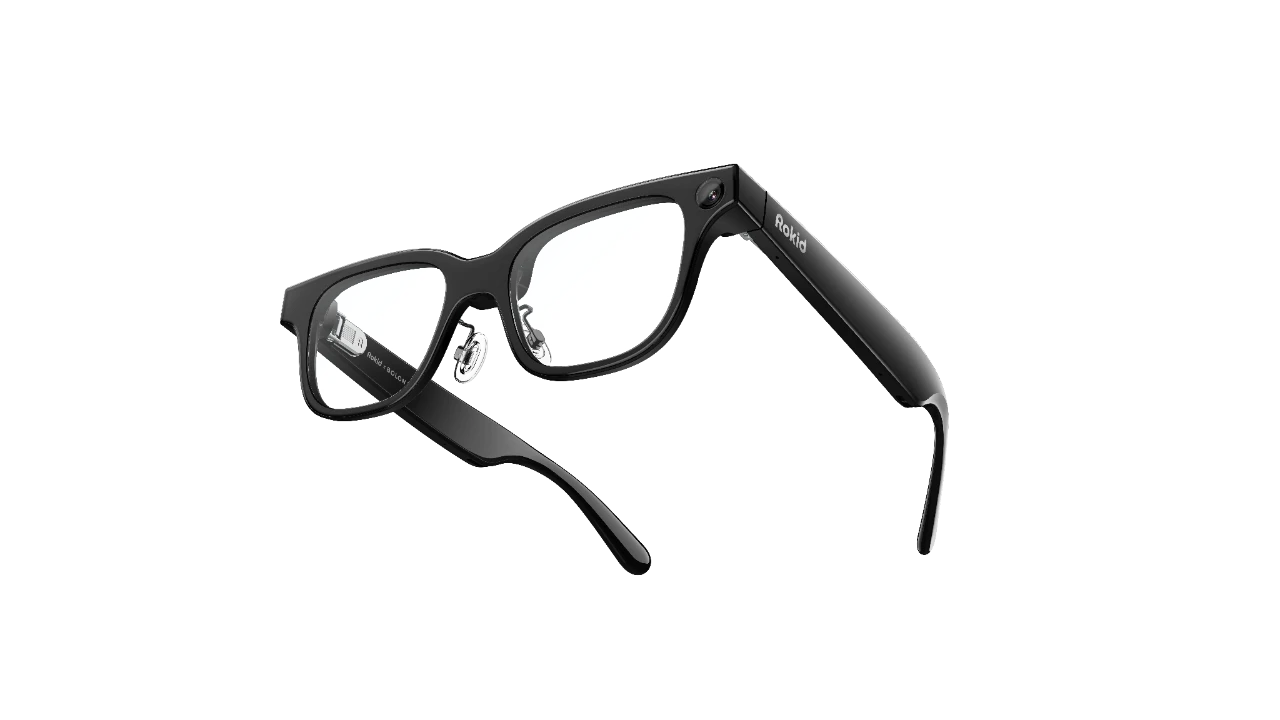
When we think of wearable computing, images of bulky, half-baked experiments often come to mind. Past attempts, from Google Glass to Snap Spectacles, struggled to convince users they were more than novelties.
However, amid the recent reveal of Meta’s brand-new Ray-Ban Display, the hype for HUD wearables has once again skyrocketed. One of the largest competitors, Rokid, with its newly launched Rokid Glasses, is also rethinking what glasses can do when paired with the power of Artificial Intelligence. In some aspects, it is more practical than Meta’s lovechild.

Weighing in at just 49 grams (almost one third lighter than Meta’s 69 grams), Rokid Glasses are the world’s lightest full-function AI & AR smart glasses. But the story doesn’t end with engineering. The product’s Kickstarter journey, global developer ecosystem, and flexible open platform are turning heads across the industry. For consumers and developers, Rokid Glasses may be a promising indication that AI glasses are ready for mainstream adoption.
The Kickstarter Success Story
The public got its first look at Rokid Glasses during the Future in Sight launch event in New York City on August 26, 2025. The closed-door event brought together media, academics, and tech insiders, who tested features like real-time translation, AR navigation, and AI teleprompter tools. On the day of its launch, Rokid opened the Kickstarter campaign, and the response was immediate.
Within the first three days, Rokid crossed the $1 million pledge mark, and within a month, backing exceeded $2.5 million, with more than 300,000 units pre-sold worldwide. For a consumer category that has long been stuck in “concept stage” hype, Rokid’s campaign numbers offer a clear message: people are ready to wear their computers.
The campaign is still live on Kickstarter, but will conclude on the morning of October 10th. To take advantage of the discounted pricing, now is the perfect time.

What Makes Rokid Glasses Viable?
- Featherlight Design: At just 49 grams, Rokid Glasses weigh less than a standard pair of sunglasses, making them viable for all-day wear.
- Dual-Eye Display: The glasses feature dual monochrome green Micro LED waveguide displays with 640×480 resolution per eye, 1,500 nits of brightness, and 30 degrees of FOV. This design not only ensures visibility outdoors but is also linked to reduced eye strain compared to single-eye setups.
- 12MP First-Person Camera: A built-in Sony IMX681 camera enables hands-free photography and video with HDR and stabilization.
- Powerful AI Functions: Translation, transcription, object recognition, teleprompter mode, and navigation are all supported natively. Integration with AI assistants such as ChatGPT enables contextual Q&A, math solving, and productivity tasks.
- Immersive Audio: Dual HD directional speakers and a four-microphone array with AI noise cancellation deliver clear audio input and output.
The result is a device that feels like a natural extension of daily life, not a prototype strapped to your face.

Open Ecosystem
Perhaps the biggest differentiator is Rokid’s stance on software. While Meta’s competing display glasses restrict functionality to its proprietary apps, Rokid has embraced an open ecosystem model.
This means Rokid Glasses can integrate with ChatGPT, Gemini, DeepSeek, Google Maps, Microsoft Translator, or even a user’s own large language model. Developers are free to experiment and customize, much like they do with Android smartphones.
This flexibility makes Rokid Glasses a global tool rather than a device limited by one company’s ecosystem. For consumers, it means the glasses adapt and potentially port the apps they already use daily. For developers, it’s an open SDK playground.
With a robust developer community. Rokid already has more than 15,000 developers and 5,000 corporate partners in China, along with collaborations at 50+ universities involving thousands of students. As Rokid expands globally, it aims to add 1,000 overseas developers in 2025 alone. This scale of community involvement could accelerate the development of smart glasses much faster than a closed-loop approach.
Scenarios in Daily Life
So what does all this mean for the average user?.
- Travel: Imagine walking through Tokyo or Rome while the glasses provide instant translation of street signs, menus, and conversations. Navigation overlays guide you to your destination without needing to pull out your phone.
- Work: In meetings, live transcription appears in your field of view, making notes redundant. Presenters can use teleprompter mode to deliver speeches smoothly.
- Accessibility: For those with hearing loss, transcription subtitles open up conversations. For caregivers, AI-powered reminders and object recognition could assist with dementia support.
- Content Creation: Creators can use the 12MP camera for POV filming, tutorials, or livestreaming, hands-free and stabilized.
- Everyday Life: From shopping lists to real-time notifications, Rokid Glasses can act as a subtle HUD that enhances focus rather than distracting from it.
Consumer Readiness: Tipping Point for AI Glasses
Perhaps the most significant lesson from Rokid’s journey is that consumers may finally be ready to embrace smart glasses. It’s not just about curiosity. The demand reflects a deeper recognition: smart glasses can solve real problems today. Rokid Glasses offer tangible use cases that resonate across demographics. For the industry, Rokid’s momentum is a reminder that the future of computing may not be in your pocket, but on your face.
The Kickstarter campaign remains live, with up to 26% off. For those who want to be among the first to experience what everyday AI glasses can truly do, now is the time to back the project, before shortages turn early adoption into a waiting game.
Filed Under: Gadgets News, Technology News, Top News
Latest Geeky Gadgets Deals
Disclosure: Some of our articles include affiliate links. If you buy something through one of these links, Geeky Gadgets may earn an affiliate commission. Learn about our Disclosure Policy.


